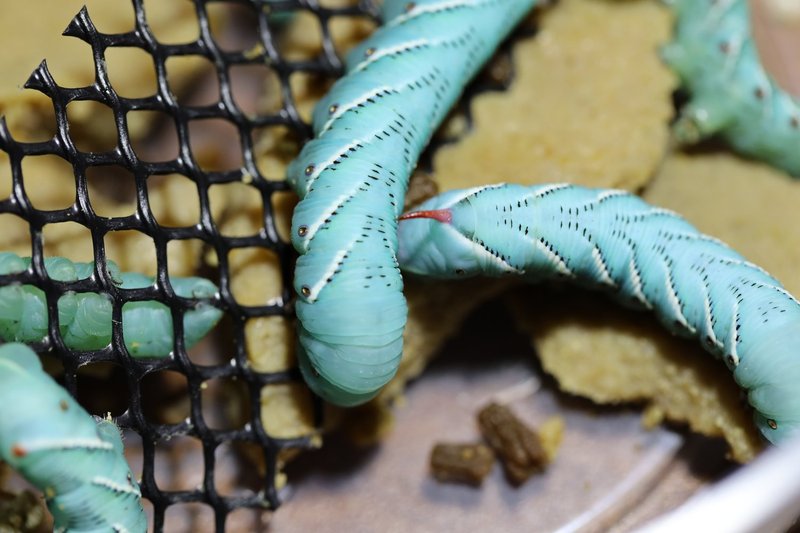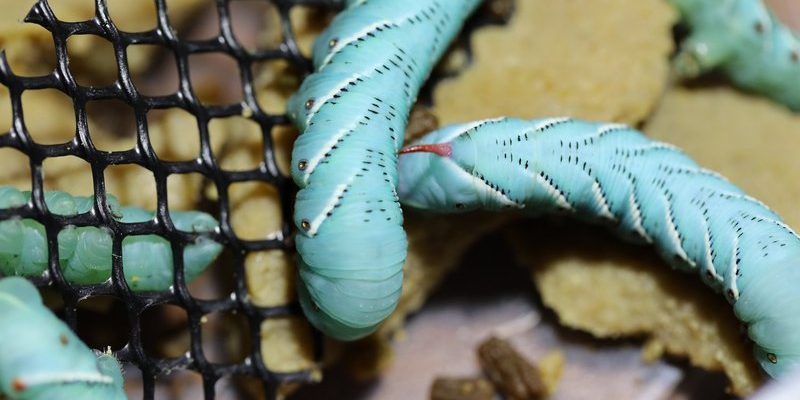
Raising hornworms can feel a bit like nurturing a pet, but with less fuss and way more wiggle. These little guys are not just some wriggly critters; they play a vital role in a balanced diet for many reptiles, amphibians, and even some birds. The best part? You can control their environment and diet to ensure they’re as healthy and nutritious as possible. So grab a cup of coffee and let’s dive into the ins and outs of raising hornworms at home.
What Are Hornworms?
Hornworms are the larval stage of the hawk moth, and they’re known for their chunky, green bodies. You might have seen them in your backyard chomping away at tomato plants. While that might not be great for your garden, it shows that these guys can eat. When raised as feeder insects, they can pack a nutritional punch for your pets.
These worms grow pretty fast, making them an appealing option for feeding. Within about 3-4 weeks, they can reach up to 4 inches long. Talk about a quick snack! Many pets, like bearded dragons and leopard geckos, love them. They’re easy to digest and provide good moisture content, which is essential for your pet’s health. If you’re looking for a feeder insect that grows quickly and has a high nutritional value, hornworms are an excellent pick.
Setting Up Your Hornworm Habitat
Creating the right environment for your hornworms is crucial. You want them to feel as comfortable as possible so they can thrive. A simple plastic container with a secure lid can work well. It doesn’t need to be fancy—just functional. Ideally, you want to keep them in a warm spot with good airflow. Think of a cozy corner in your home where the temperature hovers between 70°F and 85°F.
Here’s a quick checklist for their habitat:
- A plastic container with ventilation holes
- A substrate like paper towels or deli cups
- A consistent temperature
- A lid to keep them secure
Make sure to clean the container regularly to prevent mold and bacteria from building up. Trust me; it’s better to have a clean space for them to wiggle around than a messy one. Regular cleaning can help keep your hornworms healthy and happy.
Feeding Hornworms
Feeding hornworms is relatively straightforward. They have a voracious appetite and will happily munch on a variety of foods. You can use commercial hornworm chow, which is designed specifically for them. If you prefer a DIY option, they also enjoy fresh leaves from plants like tomato, pepper, or even hibiscus. Just make sure whatever you feed them is pesticide-free—no one wants a side of chemicals with their dinner!
Hornworms consume an impressive amount of food, almost doubling their size every few days. Keep an eye on them to ensure they’re eating properly. If you notice they’re not feeding as much, it could be a sign that something is off in their environment. You might be wondering, “How can I tell if they’re well-fed?” Look for bright, vibrant coloration—healthy hornworms will be a rich green color.
Temperature and Humidity Requirements
Maintaining the right temperature and humidity is essential for your hornworms. They thrive in warmer conditions, typically between 70°F and 85°F. Anything cooler, and they might slow down, not to mention they won’t grow as quickly. A simple heat mat can do wonders to keep their environment warm and snug.
As for humidity, hornworms prefer it to be a bit humid, around 50% to 70%. If you find your habitat is too dry, a light misting with water can help raise the humidity. Just avoid soaking them; nobody likes a soggy worm! Balancing temperature and humidity might take a little practice, but it’s definitely worth it for happy hornworms.
Common Issues and Troubleshooting
Like any hobby, raising hornworms comes with its own set of challenges. One common issue is mold growth in their habitat. To combat this, maintain a clean environment and avoid overfeeding, as uneaten food can attract unwanted mold. If you notice mold, promptly remove it and clean the area.
Another issue is pests. Sometimes, you might find tiny insects hitching a ride in your container. If you spot any unwanted guests, it’s best to isolate them from your hornworms immediately. A quick rinse can often help you eliminate these pests and keep your hornworms safe.
Sometimes, hornworms won’t pupate, which means they won’t turn into moths. This can happen if conditions are not just right. If they seem to be stuck in the larval stage for too long, take a look at their habitat—temperature, humidity, and food sources all play a part.
Harvesting and Keeping Hornworms Healthy
When it’s time to harvest your hornworms, it’s best to do it carefully. Use a pair of tweezers or your hands (if you don’t mind the squirming) to gently remove them from their habitat. If you’re feeding them directly to your pets, try to choose the largest ones first. They tend to be the most nutritious and ready for a tasty meal!
After harvesting, you can keep them in the fridge for a short period to slow their metabolism. Just remember they won’t survive long in cold temperatures, so it’s best to use them quickly. You might want to have a backup supply of smaller hornworms or other feeder insects ready just in case.
Why Raise Hornworms? The Benefits
Raising hornworms offers several benefits that go beyond just feeding your pets. First, it’s incredibly cost-effective. Purchasing feeder insects from a store can add up quickly, but growing your own can save you money in the long run. Plus, it’s a great way to ensure that your pets are getting high-quality nutrition without the worry of additives or poor health.
Additionally, raising hornworms brings a sense of satisfaction. It’s rewarding to nurture these creatures and see them grow. You’re contributing to the well-being of your pets while also engaging in a hands-on hobby. It’s a win-win!
Let’s not forget the educational aspect. If you have kids, getting them involved in raising hornworms can be a fun way to teach them about responsibility and life cycles. There’s something special about seeing the transformation of these worms into moths right before your eyes.
In summary, raising hornworms as feeder insects can be a fulfilling and educational experience. By providing them with the proper care and attention, you’ll not only have a reliable food source for your pets but may also discover a new passion along the way. Happy worm raising!

